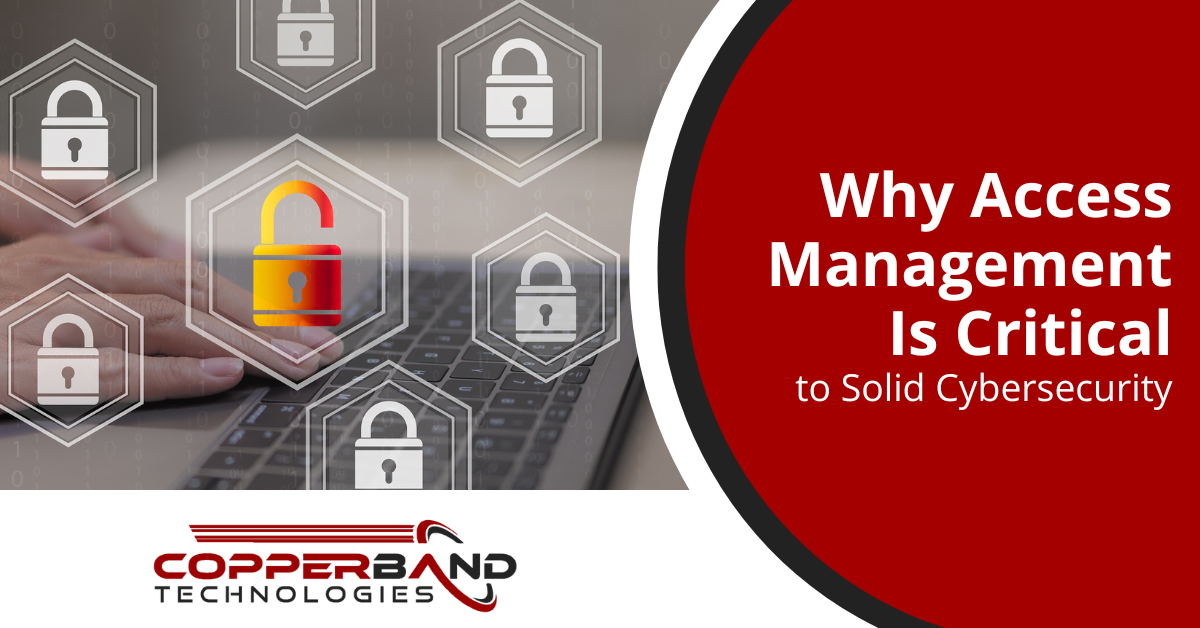Why Access Management Is Critical to Solid Cybersecurity

Every day, businesses deal with a large amount of data. It ranges from consumer personal information and buying habits to businesses’ confidential data and overall financial status. With businesses gathering and handling so much data and information, the rapid increase in cyberattacks, and the growing trend of data breaches, the need to keep their data safe and secure is essential.
According to Statista, the global average cost per data breach in 2022 was 4.35 million US dollars. This was up from 4.24 million US dollars the previous year, and it is expected to rise in the coming years. Therefore, to effectively protect your business data, businesses must take proactive measures to prevent unauthorized access from breaching the data by utilizing access management.
Access management is a security tool that restricts and prevents access to digital resources. This includes computer systems, servers, data, networks, cloud-based services, and applications. Access management is one of the critical ways to build a robust cybersecurity system because it protects organizations from internal and external threats.
This article will give all you need to know about access management and why it is critical to solid cybersecurity.
What is Access Management?
Access Management, also known as Identity and Access Management (IAM), is a system that protects applications and sensitive data from data breaches. It helps manage and control access to systems, digital resources, and data to eliminate cybersecurity risks and protect the organization’s valuable data.
Access management is essential to cybersecurity. This is because it helps businesses protect their professional and financial data from data breaches and cyber threats by restricting access to only those who need it and ensuring that every access is appropriately tracked and monitored. It also allows an authorized user to accomplish their tasks quickly and effectively.
The primary purpose of access management involves granting and revoking permissions. It also includes defining user roles and privileges, and implementing security measures to ensure authorized individuals have appropriate access while unauthorized individuals are prevented from accessing sensitive information. Effective Access Management is crucial for maintaining data privacy. Preventing the most recent types of data breaches and unauthorized activities, and strengthening overall cybersecurity is also crucial.
Types of Access Management?
Here are a few types of access management:
✔ Discretionary access control
Discretionary access control is a security access control that gives an individual control over its resources, such as files and systems and determines who may access them. It uses identification principles or authentication systems to grant or prevent access to digital resources. The primary purpose of discretionary access control is to prevent unauthorized users from accessing the owner’s resources.
✔ Mandatory access control
Mandatory access control is a kind of access management in which administrators authorize or limit access to sensitive or private information. Administrators in an organization define, configure, and implement access policies and regulations. Its primary goal is to prevent information from being leaked.
✔ Role-based access control
Role-based access control is access to digital resources given to individuals based on their organizational role. Access can be granted based on numerous variables, such as authority, accountability, responsibility, or job ability. Role-based access control allows users to access the data while preventing critical information from unauthorized employees.
✔ Attribute-based access control
Attribute-based control is access granted to persons based on their attributes rather than their roles. This type of control determines access based on the user attribute, resources, and environment. Its goal is to protect digital items such as data, network devices, and computer systems from unauthorized users.
✔ Rule-based access control
Rule-based access control is access to digital resources based on a predefined set of rules regardlessof their role or attribute in an organization. Employees can access digital resources if they meet the required regulations set by the security administrators or IT personnel.
Why is access management critical in cybersecurity?
Here is why access management is critical to solid cybersecurity:
✔ Access Management Enhances Data Security
Access management is essential to cybersecurity since it helps safeguard sensitive data from data breaches and offers better access to data control.
As data breaches have a growing impact on the productivity and efficiency of most businesses, efficient access management is critical. It will protect the confidentiality and privacy of digital resources.
Therefore, organizations should start utilizing access management systems as it improves data security by managing and monitoring user behavior and detecting unusual activities, such as unauthorized entry from any place.
✔ Access Management Provides Data Confidentiality
Access management provides data confidentiality, hence its critical effect in building solid cybersecurity. Data confidentiality is an essential component of every organization.
Over the last decade, the amount of data collected and processed by organizations has grown dramatically. As a result, keeping data private and confidential to protect it from falling into the hands of cybercriminals is highly essential.
To achieve this, organizations must implement strict rules and policies prohibiting unauthorized users from accessing confidential data and sensitive information while enabling authorized users.
✔ Access Management Uses Strong Authentication
Access management is critical in building a robust cybersecurity system because it uses strong policies or authentication, such as multi-factor authentication, to ensure unauthorized users don’t have access to digital resources.
MFA (Multi-Factor Authentication) adds extra protection to an individual account. It protects the account by requiring additional information the end user possesses besides their username and password. Also, it uses biometrics such as face ID and fingerprint to scan your identity. This will prevent unauthorized users from accessing your account.
✔ Access Management Regulates Compliance
Access management in your organization may help complete compliance standards by mitigating user access and system data risks. As data is becoming an integral part of businesses, it is crucial to meet the data privacy set by the organization and government. Therefore, access management will aid in preventing cybersecurity risks such as data breaches and ensure your business meets various compliance standards.
✔ Access Management Reduces the Chances of Human Error
Many cybersecurity loopholes result from human errors, such as poor password management, poor network management, lack of awareness, or using outdated software. These errors are one of the factors that makes it very easy for cybercriminals to gain access to your business networks.
However, with an access management system in place, the dangers associated with human error in the business setting are reduced, leading to lowered costs and improved efficiency.
Let Copperband Help Secure Your Data Today
Copperband Technologies focuses on helping small and medium-sized businesses in Middle Tennessee and Southern Kentucky secure their data. Furthermore, we have IT specialists and tools we can use to improve your cybersecurity strategy.
Contact us for more information!






